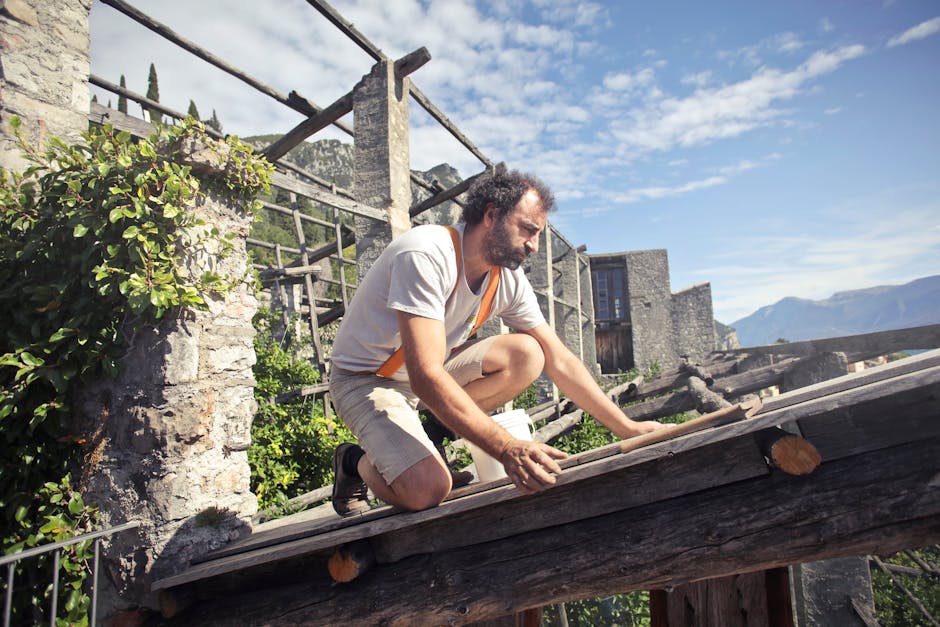Common Causes of Roof Leaks and How to Fix Them

Roof leaks are a problem that can result in substantial damage to your house if not dealt with promptly. These leaks can originate from sources, such as weather related wear and tear, improper installation and lack of upkeep. Recognizing the reasons for roof leaks and understanding how to repair them is crucial for preserving the structural soundness of your home and avoiding expensive repairs.
1. Weather Related Wear
The weather has an impact on the condition of your roof. Heavy rain, snow, hail and strong winds can all contribute to roof damage. Over time these elements can deteriorate roofing materials leading to leaks.
One prevalent issue is water accumulating on low slope roofs. When water doesn't drain properly it can infiltrate cracks. Cause leaks. Furthermore ice dams during winter can result in water pooling under shingles and entering your home.
To tackle weather related wear;
- Ensure drainage by routinely cleaning gutters and downspouts.
- Incorporate weather resistant materials like rubber membranes on roofs.
- Utilize heat cables to prevent ice dams in regions.
2. Improper Installation
Inadequate installation is another factor, behind roof leaks.
If your roof wasn't installed properly it may not offer protection from the elements. Problems like incorrect flashing around chimneys, skylights and vents can create spots where water could seep in. It's important to hire trustworthy roofing contractors to make sure your roof is put in place correctly. Look for warranties and certifications that ensure high quality workmanship.
If you suspect an installation;
- Have a professional inspect your roof for any signs of improper setup.
- Consider fixing areas with known problems to prevent future leaks.
- Invest in top notch materials to boost your roofs durability.
3. Neglecting Maintenance
Regular upkeep is crucial for extending the life of your roof and avoiding leaks. Ignoring checks and repairs can turn minor issues into major headaches over time. Common maintenance tasks include checking for missing shingles clearing debris from gutters and ensuring secure flashing. By staying with maintenance you can catch potential issues early before they escalate into significant damage.
Maintenance suggestions;
- Schedule yearly roof inspections by a professional.
- Replace damaged or missing shingles promptly.
- Keep gutters and downspouts free of leaves and debris.
4. Aging Roof
The age of your roof can also play a role, in causing leaks.
Most types of roofing materials typically last between 20 and 50 years depending on the material chosen. As roofs get older they become more vulnerable to damage from weather conditions and normal wear and tear.
If your roof is approaching the end of its expected lifespan it's important to keep an eye on it for any signs of deterioration. Common red flags include shingles curling up loss of granules and visible cracks or splits.
| Roof Material | Average Lifespan (years) |
|---|---|
| Asphalt Shingles | 20-30 |
| Metal Roofing | 40-70 |
| Clay Tiles | 50-100 |
| Slate Tiles | 75-200 |
Should you observe these warning signs;
- Seek advice from a roofer to evaluate your roofs condition.
- Consider a complete replacement if repairs are no longer cost effective.
- Opt for materials for enhanced longevity in the future.
It's crucial to keep an eye on aging roofs and address issues promptly to prevent leaks that could lead to significant damage to your homes structure and interior.
Understanding the reasons behind roof leaks—such, as weather related harm, improper installation, lack of upkeep and aging—can empower you to take proactive steps in safeguarding your home. Regular inspections, repairs and proper installation techniques play key roles in maintaining a leak proof roof.
Staying updated on issues and taking timely action with expert advice when needed helps in maintaining the good condition of your roof for the long haul.
Frequently Asked Questions (FAQs) about Roof Leaks
1. How can I tell if there's a leak in my roof?
Common indicators of a roof leak include water marks on ceilings or walls mold growth, moist insulation and peeling paint. You might also observe dripping during rain or notice visible damage on the roof like missing shingles or cracked tiles.
2. Is it possible to repair a roof leak by myself?
While minor fixes such as replacing a few shingles or sealing cracks can be carried out by confident DIY enthusiasts its generally recommended to seek advice from a professional roofer, for an accurate assessment and repair. This ensures that the issue is correctly addressed and prevents harm.
3. What is the typical cost of fixing a roof leak?
The cost of repairing a roof leak can vary based on the severity of the damage and the type of roofing material used.
Minor repairs may come with a price tag of a hundred dollars but if the damage is more extensive and requires structural work you could be looking at costs in the thousands. It's always wise to get estimates from trustworthy contractors to ensure you're getting a fair deal.
How long it takes to fix a roof leak depends on how serious the issue's what the weather conditions are like. Simple repairs might only take a hours while more complicated fixes could stretch out over several days. It's best to have a conversation with your contractor about timelines so you have an idea of what to expect.
To prevent roof leaks there are some important steps you can take;
- Regular Inspections: Make sure to schedule yearly inspections to catch any potential problems early on.
- Timely Maintenance: Keep your gutters clean replace any damaged shingles promptly and address any signs of wear and tear as soon as they appear.
- Quality Installation: Have your roof installed by experienced professionals using top notch materials.
- Weather Preparedness: Use weather resistant materials and make sure your drainage systems can handle heavy rain or snow effectively.
Roof Maintenance Tips
When it comes to maintaining your roof having the tools is crucial. Here are the top five tools that every homeowner should have for roof upkeep;
- Ladder: A sturdy extension ladder is essential for safe access to your roof, for inspections and minor repairs.
To keep your roof in shape and protect your home from leaks it's important to have the right tools on hand. Here are some essential items you may need;
- Roofing Hammer: These hammers are designed specifically for driving nails without causing damage to shingles.
- Pry Bar: An tool for safely removing old shingles and nails during repairs.
- Caulking Gun: Handy for applying roofing sealant to fix small cracks and leaks.
- Tarp: Having a heavy duty tarp can provide protection in case of emergency leaks until professional assistance arrives.
Having these tools at your disposal can help you be proactive, in maintaining the integrity of your roof and safeguarding your home from water damage.
